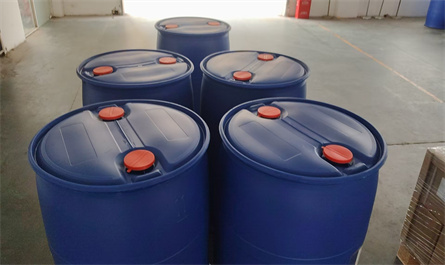Diversified application scenarios of organic silicon Adjuvant in agricultural production
In the field of pest control, organic silicon Adjuvant shows irreplaceable advantages. When controlling citrus psyllids (the vector of Huanglongbing), a comparative test by the Guangdong Agricultural Technology Extension Center showed that after adding 0.05% organic silicon to conventional pyrethroid pesticides, the amount of droplet drift was reduced by 35% and the amount of leaf back deposition increased by 70% under wind speed of 3m/s. For powdery mildew control in facility agriculture, organic silicon Adjuvant can help fungicides penetrate the hydrophobic barrier on the surface of mycelium. The practice of the strawberry planting base in Miyun District, Beijing shows that the use of triadimefon in combination with organic silicon Adjuvant can extend the protection period by 5-7 days.

In terms of leaf nutrition supplementation, organic silicon has created a "nutrition express lane". In Xinjiang cotton planting, after adding organic silicon Adjuvant to boron fertilizer, the leaf absorption rate increased from less than 20% to more than 55%, effectively solving the problem of buds but no flowers. More noteworthy is its effect on trace elements: metal ions such as iron and zinc are easy to form precipitation with phosphate, and organic silicon Adjuvant maintains its activity through chelation. In the prevention and control of iron deficiency chlorosis of apple, the correction speed of ferrous sulfate + organic silicon Adjuvant combination is 3 times faster than traditional methods.
In water-saving agriculture, organic silicon Adjuvant shows special value. Experiments in Ningxia dryland agricultural areas have shown that seeds treated with organic silicon have increased the silicification degree of seedling roots and increased water use efficiency by 18%-22%. This "biological water-retaining film" effect originates from the deposition of silicon in the cell wall, which enables crops to maintain basic physiological activities under drought conditions. In the 2024 Gansu corn drought resistance test, the organic silicon Adjuvant treatment group still maintained an 85% yield level under drought conditions with a 30% reduction in yield.

In terms of leaf nutrition supplementation, organic silicon has created a "nutrition express lane". In Xinjiang cotton planting, after adding organic silicon Adjuvant to boron fertilizer, the leaf absorption rate increased from less than 20% to more than 55%, effectively solving the problem of buds but no flowers. More noteworthy is its effect on trace elements: metal ions such as iron and zinc are easy to form precipitation with phosphate, and organic silicon Adjuvant maintains its activity through chelation. In the prevention and control of iron deficiency chlorosis of apple, the correction speed of ferrous sulfate + organic silicon Adjuvant combination is 3 times faster than traditional methods.
In water-saving agriculture, organic silicon Adjuvant shows special value. Experiments in Ningxia dryland agricultural areas have shown that seeds treated with organic silicon have increased the silicification degree of seedling roots and increased water use efficiency by 18%-22%. This "biological water-retaining film" effect originates from the deposition of silicon in the cell wall, which enables crops to maintain basic physiological activities under drought conditions. In the 2024 Gansu corn drought resistance test, the organic silicon Adjuvant treatment group still maintained an 85% yield level under drought conditions with a 30% reduction in yield.
RECENT POSTS
-
Agricultural production enhancer Indole Acetic Acid (IAA) shortens rooting time and increases fruit set rate
-
The Role of Forchlorfenuron (CPPU / KT-30) in Kiwifruit Growth
-
some agricultural products necessitate the use of plant growth regulators
-
Pineapple cultivation in Vietnam continues to expand and What plant growth regulators are used during pineapple growth?
Featured News



